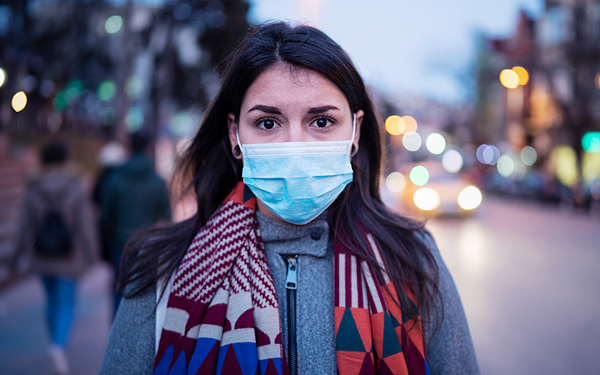The Office of the Principal Scientific Advisor to the Government of India has issued a detailed manual on homemade masks : “Masks for Curbing the Spread of SARS-CoV-2 Coronavirus”.
Quoting the World Health Organization , the manual states that “Masks are effective only when used in combination with frequent hand-cleaning with alcohol-based hand rub or soap and water. If you wear a mask, then you must know how to use it and dispose of it properly.”
Analyses show that if 50% of the population were to wear masks, only 50% of the population would be infected by the virus. Once 80% of the population wears a mask, the outbreak can be stopped immediately.
On Why Wear a Mask?, it says that “COVID-19 virus spreads easily from person to person contact. Virus carrying droplets dry fast enough to form droplet nuclei and remain airborne eventually landing on different surfaces. SARS-CoV-2, the virus that causes COVID-19, has been detected in aerosols for up to three hours and on plastic and stainless steel surfaces for up to three days. (N.Engl J.Med. 2020)”.
The manual says that Masks lower the chances of coronavirus entering the respiratory system through droplets still in the air from an infected person. It says that reducing the chances of inhaling the virus by wearing a protective mask that is cleaned thoroughly using a combination of approaches that use Heat, UV light, water, soap and alcohol, will be vital to stopping its spread.
The proposed guide is meant to provide a simple outline of best practices to make, use and reuse masks to enable NGOs and individuals to self-create such masks and accelerate widespread adoption of masks across India. The key criteria for proposed designs are Ease of Access to Materials, Easy of Making at Home, Ease of Use and Reuse. Wearing of masks is especially recommended for people living in densely populated areas across India.
Earlier in its update on Science, Technology and Innovation response to COVID-19, the Office of the Principal Scientific Advisor to the Government of India stated that the Science and Technology Empowered Committee for COVID-19 response has rapidly worked towards implementation of scientific solutions. The following actions are in place keeping in view the critical need to increase the testing facilities for COVID-19: An office memorandum allowing institutes under DST, DBT, CSIR, DAE, DRDO and Indian Institute of Science (IISc) to self assess and prepare their labs for research and testing through the standard and rigorous protocol. Testing will be stratified according to priorities set by the Ministry of Health and Family Welfare (MoHFW) and ICMR. Research will also be stratified into short and mid-term returns.
The S & T Empowered Committee was constituted on 19th March 2020. The committee is chaired by Prof. Vinod Paul, Member, NITI Aayog and Prof. K Vijay Raghavan, Principal Scientific Adviser to the Government of India, and is responsible for coordination amongst science agencies, scientists, industries and regulatory bodies, and to take speedy decisions on research and development to implementation related to the Sars-Cov-2 virus and the COVID-19 disease.
The following is the detailed manual on using homemade masks (replacing the earlier Manual issued):
Source: PIB
Image Courtesy: UHhospitals
You may also like
-
Navigating India’s Skill Landscape
-
Trade Connect E-platform For Exports Is Single Window, Fast, Accessible And Transformational: Shri Piyush Goyal
-
India-us Working Together In Areas Like Critical Minerals, Supply Chains And Advanced Technologies: Shri Piyush Goyal
-
Cabinet Approves Health Coverage to All Senior Citizens of the Age 70 Years and Above Irrespective of Income
-
Cabinet Approves PM Electric Drive Revolution in Innovative Vehicle Enhancement (PM E-DRIVE) Scheme With An Outlay of ₹.10,900 Crore
